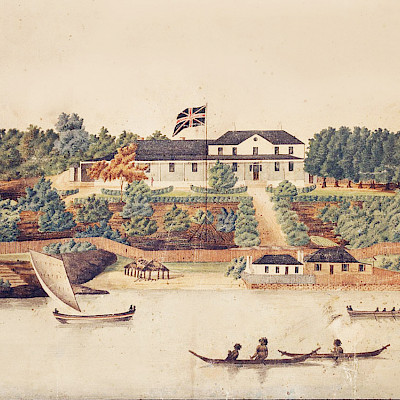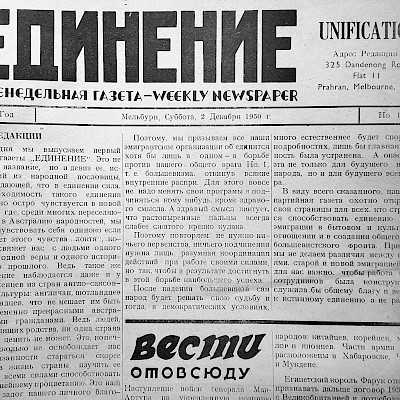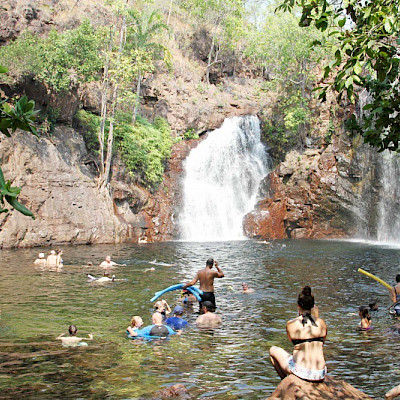В июне 2016 состоится кругосветный перелет российского пилота Фёдора Конюхова на воздушном шаре «Мортон». Делая ставку на современные технологии, известный русский путешественник планирует без посадки в одиночку облететь вокруг Земли и установить ряд мировых рекордов. Старт перелёта состоится на Западной части Австралии в городе Нортам (Northam).
Воздухоплавательная экспедиция проходит при поддержке Русского географического общества.
За всю историю мирового воздухоплавания было осуществлено всего два успешных перелета вокруг света:
- март 1999 года
швейцарец Бертран Пикар и англичанин Брайн Джонс смогли облететь вокруг света с третьей попытки, выбрав северный маршрут со стартом в горах Швейцарии и финишем в пустыне Египте, преодолев 40 тысяч километров за 19 дней, 21 час и 55 минут.
- июнь 2002 года
американец Стивен Фоссетт смог облететь вокруг света в одиночку с шестой попытки, выбрав южный маршрут со стартом и финишем в Австралии, преодалев 33 тысячи километров за 13 дней, 8 часов, 33 минуты.
Фёдор Конюхов планирует улучшить эти показатели. Перелёт будет проходить по маршруту: Австралия — Тасманово море — Новая Зеландия — Тихий океан — Южная Америка (Чили и Аргентина) — Фолклендские острова — Атлантический океан — Африка (ЮАР, мыс Доброй Надежды) — Индийский океан и финиш в Австралии. Длина маршрута составит порядка 33–35 тысяч километров.
Генеральным партнёром проекта выступает крупнейший российский застройщик — Группа Компаний «Мортон» — www.morton.ru.
Среди тех, кто также поддерживает Фёдора Конюхова в этой экспедиции — производитель шара компания Cameron Balloons, опытный воздухоплаватель и основатель корпорации Virgin Group сэр Ричард Брэнсон, компания Breitling и многие другие.
Официальный сайт проекта: www.konyukhov.ru.
Справочная информация
Воздушный шар «Мортон» производства компании Cameron Balloons — комбинированный аэростат типа «Розьер». Подъёмная сила в нем создается гелием и подогревом несущего газа:
днем шар поднимается и находится на заданной высоте за счет солнечного тепла и расширения гелия
в ночное время — за счет работы газовых горелок, находящихся под нижней камерой.
Для работы горелок используются 34 стальных баллонов с пропаном, вес каждого из которых составляет 180 кг.
Оснащён спутниковой системой ГЛОНАСС.
Гондола из углеволокна (карбона) оборудована люком и одним смотровым окном. Под ее днище установлены два киля и плавучий якорь на случай посадки в океан. Внутри гондола напоминает отсек спасательной шлюпки с автономностью до 7 дней. Навигационная рубка и место для сна — минимум удобств.
На высоте свыше 5 тысяч метров пилот должен использовать кислородную маску (аналогичную той, что использовал при восхождении на Эверест).
Ключевые цифры
- Маленькая газовая оболочка 700 м³
- Большая газовая оболочка 15 500 м³
- Внешняя оболочка 18 000 м³
- Высота шара — 56 метров
- Вес конструкции на старте 10 000 килограмм
- Вес конструкции после завершения полета (примерно) 3500 — 4 000 килограмм
- Максимальная высота полета 10 тысяч метров
- Максимальная скорость 300 километров в час
- Протяженность маршрута — 33–35 тыс. километров
Биография Федора Конюхова
FEDOR KONYUKHOV - Born December 12, 1951, on the coast of the Sea of Azov (part of the Black Sea).
Graduated Odessa’s Maritime College, majoring in navigation, and Leningrad’s Arctic College, majoring in ship mechanics. Graduated Bobruisk’s College of Arts (Belorussia).
From an early age, Fedor strived to travel and discover the world and its infinite diversity. He accomplished his first expedition at the age of fifteen, having crossed the Sea of Azov in a row boat.
In 1983, being the youngest member at the time, Fedor, was admitted to the Artists Union of USSR. In 1996 he became a member of the Moscow Artists Union - Graphic Arts section; and in 2001, became a member of the Sculpture section as well.
Gold Medal Laureate and Honorary Academician of the Russian Arts Academy and author of more than 3,000 paintings; Fedor has participated in a number of Russian and international exhibitions.
A member of Russia’s Journalists Union and Russia’s Writers Union, Fedor is the author of seventeen books.
Awarded the ‘Friendship of Peoples’ medal of the USSR for the trans-Arctic ski expedition ‘USSR - North Pole - Canada’ (1988).
Awarded the UNEP ‘GLOBAL 500’ Prize for his contribution to environmental protection. He is also holder of UNESCO’s ‘Fair Play’ Prize.
A Full member of the Russian Geographic Society, Fedor is listed in the ‘Chronicles of Mankind’ encyclopedia.
An Aerostat Balloon Pilot, and a Yacht Captain, Fedor has circumnavigated the globe four times, and has crossed the Atlantic Ocean fifteen times, including a row boat crossing.
The first and only person in the world, so far, to have reached the five extreme Poles on earth:
- the North Pole (three times).
- the South Pole.
- the Pole of Inaccessibility in the Arctic Ocean.
- the top of Mount Everest (Alpinists pole) (twice).
sailed around the world via Cape Horn (Yachtsmen pole) (four times).
Head of the ‘Remote Training Under Extreme Conditions’ Laboratory at the Modern Humanitarian Academy, in Moscow since 1998.
By the age of fifty he had achieved more than forty unique expeditions and ascensions and had illustrated his vision of the world in countless paintings and books.
Became a Global Ambassador for Australia Zoo Wildlife Warriors program in 2015.
EXPEDITIONS
1977 (May-August) - Scientific Research Sailing Expedition on the 40 ft yacht, ‘CHUKOTKA’ retracing Commodore Vitus Bering’s 1725-1730 voyage. Route: Vladivostok - Sakhalin Island - Kamchatka and the Commodore Islands. Duration: 4 months. Distance: 4,000 nautical miles.
1978 (May-August) - Second leg of expedition - Archaeological Research Sailing Expedition on the 40 ft yacht ‘CHUKOTKA’ retracing Commodore Vitus Bering’s 1725-1730 voyage. Route: Vladivostok - Sakhalin Island - Kamchatka and the Commodore Islands. Duration: 4 months. Distance: 4,000 nautical miles.
1979 (May-August) - Third leg of the Scientific Research Sailing Expedition on the 40 ft yacht, ‘CHUKOTKA’ retracing Commodore Vitus Bering’s 1725-1730 voyage. Including an ascension of the Klyuchevskiy Volcano, on the Kamchatka Peninsula. Organizer of memorial plaques, honoring Vitus Bering and his crew, sited on the Commodore Islands. Route: Vladivostok - Sakhalin Island - Kamchatka and the Commodore Islands. Duration: 4 months. Distance: 4,000 nautical miles. Total Distance: 12,000 nautical miles over 3 expedition periods.
1980 - Participated in the International Baltic Cup regatta as crew member from the Far-Eastern Marine Academy (Vladivostok).
1981 - Crossing, Chukotka (Russia’s furthest Eastern Region) on dog-sled; completing a scientific research expedition and accumulated materials for his art works. Route: Novo Chaplino - Providenia - Uelen and back. Distance: 1,500 km.
1983 - Scientific ski team expedition across the Laptev Sea (Arctic Ocean). Fedor’s first polar ski expedition in preparation for the Antarctic crossing. Duration: 30 days.
1984 - Participated in the International Baltic Cup regatta as crew member from the Far-Eastern Marine Academy (Vladivostok).
1984 - Rafting down the Lena River. At 4,472 km in length it is the easternmost of the three great Siberian rivers that flow into the Arctic Ocean. Duration: 3 months. Distance: 2,500 km.
1985 - Expedition across the Ussurian Taiga (Far East of Russia), retracing the 1906 route of Russian explorer V.K. Arseniyev. Studying the Siberian tiger population - traveling on foot, horse-back and rafting. Duration: 45 days. Distance: 1000 km.
1986 (Winter) - Ski team expedition crossing to the Pole of Inaccessibility in the Arctic Ocean, Setting out from the Soviet drifting polar stations ‘North Pole 26’ and ‘North Pole 27’ on January 29, the group, enduring absolute polar night darkness, reached the Pole on March 7, 1986. Duration: 38 days. Distance: In excess of 700 km.
Footnote: The Pole of inaccessibility marks a location that is the most challenging to reach, owing to its remoteness from geographical features, which could provide access. The term is a geographic construct, not an actual physical phenomenon. Northern Pole of Inaccessibility (84°03 N 174°51 W). Located on the Arctic Ocean pack ice at a distance farthest from any land mass. It is 661 km from the Northern Geographical Pole, 1,453 km north of Barrow, Alaska, and equidistant from the closest landmasses, Ellesmere Island and Franz-Josef Land, 1,094 km away. Due to the constant motion of the pack ice, no permanent structure exists at the pole.
1987 - International Ski expedition to Baffin Island (Canada) as part of the Soviet-Canadian expedition (part of the training program in preparation for the North Pole expedition). Duration: 40 days.
1988 - Ski expedition across the Arctic Ocean: Siberia - Geographic North Pole - Canada, as a member of Russian-Canadian team. (9 Russians and 4 Canadians) Setting out across the drifting ice pack on March 3, the group reached the Geographical North Pole April 24, and finished at Ward Hunt Island June 1, 1988. Route: Arctic Cape, Sredni Island, Severnaya Zemlya Archipelago - Geographical North Pole - Ward Hunt Island, Canada. Duration: 52 days. Distance: 1,830 km.
1989 (Spring) - Participated in first Russian unsupported ‘Arctic’ expedition to the North Pole, under the leadership of Vladimir Chukov. Starting March 4, from Schmitt Island, Severnaya Zemlya Archipelago. The expedition reached the North Pole May 6, 1989. Duration: 63 days. Distance: 930 km.
1989 (Summer-Autumn) - Expedition leader of the first joint Russian-American, East to West, transcontinental bicycle crossing, starting June 18 and finishing October 26, 1989. Route: Vladivostok - Moscow - St. Petersburg. Duration: 131 days. Distance: 10,000 km.
1990 (Spring) - Solo ski trek expedition to the Geographical North Pole. First Russian to reach the Geographical North Pole alone. Setting out from Cape Lokot, Sredni Island, Severnaya Zemlya Archipelago on March 3, reaching the North Pole on May 8, 1990. Duration: 72 days. Distance: 950 km.
1990 (Autumn) - 1991 (Spring) - The first yachtsman in Russian history, to complete a solo non-stop circumnavigation on a yacht. Setting out October 28, 1990 on the 36 ft yacht ‘KARAANA’ (Swanson design) - finishing June 8, 1991. The project was supported by Australian Entrepreneur, Dick Smith and the Australian Geographic magazine. ‘Karaana’ - ‘Quiet place’ in the Aboriginal language. Fedor’s first successful solo round the world sail. Route: Sydney - Cape Horn - Equator - Cape of Good Hope - Cape Leeuwin - Bass Strait - Sydney. Duration: 224 days. Distance: 29,000 nautical miles.
1991 (Summer-Autumn) - Facilitator of the Russian-Australian East to West, transcontinental 4x4 expedition across the Soviet Union as part of a documentary film project ‘Across the Red Unknown’ by Australian TV presenter George Negus for SBS TV. Setting out on August 5, and finishing in September 15, 1991. Route: Vladivostok to Moscow. Duration: 41 days.
Footnote: The expedition started off in the Soviet Union and finished in the Russian Federation, due to the collapse of the USSR in August 1991.
1992 (February 26) - Climbed the highest mountain in Europe - Elbrus/Russia (5, 633 m) as a part of the ‘7 Summits of the World’ program. Duration: 1 week.
1992 (May 14) - Climbed the highest mountain in Asia - Everest (8,848m) (Together with Evgeny Vinogradski) as a part of the ‘7 Summits of the World’ program. The climb was the first successful Russian ascension of Mt. Everest. Duration: 2 months.
Footnote: (The first successful Everest ascension for the Soviet Union was in 1982)
1993-1994 - Captain of the round world expedition on the 56 ft ketch ‘FORMOSA’. Setting out on March 25, 1993 from Kilunen Bay, Taiwan and finishing in Vladivostok on 26 August 1994. Route: Taiwan - Hong Kong - Singapore - Ve Island (Indonesia) - Victoria Island (Seychelles) - Yemen (Aden port) - Jeddah (Saudi Arabia) - Suez channel - Alexandria (Egypt) - Gibraltar - Casablanca (Morocco) - Santa Lucia (Caribbean) - Panama canal - Honolulu (Hawaii) - Mariana Islands - Taiwan - Vladivostok. Fedor’s second successful solo round the world sail. Duration: 508 days. Distance: 40,000 nautical miles.
1995-1996 - The first, in the history of Russia, a solo trip, alone and unsupported to the Geographical South Pole, followed by an ascent to the highest peak in Antarctica - Vinson Massif (5,140 m) as a part of his ‘7 Summits of the World’ program. Setting out from Hercules Bay 8 November 1995 - Reached the South Pole on January 6, 1996. Duration: 64 days.
1996 (January 19) - Solo climb of the highest mountain in Antarctica - Vinson Massif (4,897 m) as a part of the ‘7 Summits of the World’ program.
1996 (March 09) - Solo climb of the highest mountain in South America - Aconcagua, (6,962 m) as a part of the ‘7 Summits of the World’ program. Duration: 2 weeks.
1997 (February 18) - Solo climb of the highest mountain in Africa - Mt. Kilimanjaro (5,895 m) as a part of the ‘7 Summits of the World’ program.
1997 (April 17) - Solo climb of the highest mountain in Australia - Mt. Kosciusko (2,228 m) as a part of the ‘7 Summits of the World’ program.
1997 (May 26) - Climbed the highest mountain in North America - Mt. McKinley (6,195 m) as a part of the ‘7 Summits of the World’ program.
Footnote: Fedor is the first Russian to complete the ‘7 Summits of the World’ program. Taking him 5 years to accomplish. 1992 - 1997. Web source: http://www.everestnews.com/seven.htm
1997 (Autumn) - Participation in multiple European regattas: the Sardinia Cup, Gotland Race, and Cowes Week as co-skipper of the Russian Team, on the maxi-yacht ‘Grand Mistral-80’ under the command of skipper Sergei Borodinov.
1998-1999 - Participation in the International solo around the world yacht race ‘Around Alone’ (ex BOC Challenge) on the yacht ‘Open 60’ type ‘Modern University of Humanities’. (Nandor Fa design) Setting out Sept 1998 from Charlestown arriving back in Charlestown May 1999. Fedor’s third successful solo round the world sail. Route: Charleston (USA) - Cape Town (RSA) - Auckland (New Zealand) - Punta Del Esta - (Uruguay) - Charleston (USA) Duration: 9 months. Distance: 27,000 nautical miles.
2000 (March) - Completed the longest dog race IDITAROD - from Anchorage to Nome, Alaska USA. Duration: 15 days. 5 hours. 44 min. Distance: 1,150 miles (1.800km) Web source: http://iditarod.com/race/2000/
Footnote: Fedor only had 3 months to prepare for the race, utilizing a rented dog team and equipment by Linda Plenter, Nevertheless he showed amazing results for a rookie and was awarded the ‘Red Lantern’ prize for finishing the race. Of the 81 registered participants, 13 were scratched or withdrew from the race.
2000-2001 - The first in the history of Russian yachting, participation in the French solo non-stop round the world yacht race ‘Vendee Globe 2000’ on the ‘Open 60’ type ‘Modern University of Humanities’ yacht. (Nandor Fa design) Setting out from Les Sables D’Olone in 9 November 2000. Web source: https://en.wikipedia.org/wiki/Vend%C3%A9e_Globe#2000.E2.80.9301
Footnote: Due to a technical breakdown, Fedor had to stop in Sydney and was forfeited from the (non-stop) race. The boat was then sold in Australia.
2002 (Spring) - Organization of the first Camel Caravan Expedition in modern Russian history - ‘Along the tracks of the Great Silk Road-2002’. The 13 camel caravan ventured around Russia’s southern regions; setting out on April 4 and finishing in Elista, Kalmykia June 12, 2002. Route: Kalmykia - Astrakhan - Dagestan - Stavropol region - Volgograd region - Kalmykia. Duration: 69 days. Distance: 1,050 km.
2002 (Autumn-Winter) - A first in Russian history; a solo Atlantic Ocean crossing on a 7 meter rowing boat ‘URALAZ’. Starting from October 16, and finishing in Barbados, December 1, 2002. Setting a New World Record (under the solo crossing category). Record registered by Ocean Rowing Society. Route: Canary Islands (La Gomera) – Barbados (Port St. Charles). Duration: 46 days. 4 hours. Distance: 3,000 nautical miles.
Footnote: Also setting the best 24-hour distance of 110 nautical miles in the same boat.
2003 (March) - A joint Russian-British transatlantic record crossing from East to West (Canary islands to Barbados) with Tony Bullimore (UK) on the 100ft maxi-catamaran ‘ALYE PARUSA’ (Sir Peter Blake’s ex. ENZA.) Setting a New World Record for a maxi multihull for this route. Registered by WSSRC. (World Sailing Speed Record Council). Duration: 9 days.
2003 (April) - A joint Russian-British transatlantic record crossing from West to East (Montega Bay, Jamaica to Lands End (UK) with Tony Bullimore (UK) on the 100ft maxi-catamaran ‘ALYE PARUSA’ (Sir Peter Blake’s ex. ENZA.) Setting a New World Record for a maxi multihull for this route. Registered by WSSRC. (World Sailing Speed Record Council). Duration: 16 days.
2003 (September) - Co-skipper during the Trans-Baltic record, sailing the newest maxi boat ‘BOLS’ from Helsinki (Finland) to St. Petersburg (Russia). Setting a New World Record. Registered by WSSRC. (World Sailing Speed Record Council). Duration: 11 hours.
2004 (February) - A solo transatlantic crossing from East to West on a 85ft maxi yacht ‘ALYE PARUSA’ from Canary island (La Gomera) to Barbados (Port St. Charles). Setting a New World Record for a solo Atlantic crossing and the fastest record for a solo ocean crossing on a maxi monohull for this route. Registered by WSSRC (World Sailing Speed Record Council). Duration: 14 days. 7 hours. Distance: 3,100 nautical miles.
2004-2005 - Solo round the world sailing on the ‘Open’ type 85ft maxi-yacht ‘ALYE PARUSA’. Fedor’s fourth successful solo round the world sail. Route: Falmouth (England) - via Cape of Good Hope - Hobart (Tasmania) - via Cape Horn - Falmouth. Distance: 29,000 nautical miles.
2005 (December) - 2006 (January). ‘Around the Atlantic Ocean’ campaign. Captain of the Russian crew, of the ‘Open’ type 85ft maxi-yacht ‘ALYE PARUSA’. In training for a fully crewed ‘Round the World’ record attempt. Route: Falmouth, England - Canary Islands - Barbados - Antigua - Falmouth, Cornwall, England. Duration: 15 days. 22 hours. Distance: Exceeding 10,000 nautical miles.
2006 (April) - Organization of trans-Greenland ice boat-crossing expedition from the East coast to the West coast of Greenland.
2007 (May) - Dog Sled Expedition across the Greenland Ice Cap from East to West. Starting from Isortoq (East Coast) and finishing at Ilullisat (West Coast) setting a Record for the fastest East to West crossing. Duration: 15 days. 22 hours. Distance: Approx. 800 km.
2007-2008 - First person to sail the ‘Antarctica Cup’. Solo non-stop circumnavigation around Antarctica. Route: Albany, Western Australia - Cape Horn - Cape of Good Hope - Cape Leeuwin, Albany, WA. Duration: 102 days. Distance: 15,000 nautical miles.
2009 (May-September) - The second stage of the international expedition, ‘Along the tracks of the Great Silk Road-2009’ Setting out from Ulan-Bator, Mongolia and finishing in Elista, Kalmykia. Route: Mongolia (Ulan-Bator) – Kalmykia (Elista). Duration: 4 months. Distance: 5,500 km.
2011 (Spring) - Crossed the Danakil dessert in Ethiopia on camel-back. Enduring record 60° C. temperatures, Fedor plotted a course to all the ‘9 highest peaks of Ethiopia’ Africa, ascending all the respective heights in succession. Duration: 42 days. Distance: 1,200 km. Web source: https://en.wikipedia.org/wiki/Danakil_Desert
2012 (May 19 - April) - As part of the Russian 7 Summits’ team expedition, Fedor reached Everest’s peak for the second time. Their ascension was via the Northern Ridge (Tibet). Duration: 2 months.
2013 (April-May) - Dog Sled Expedition from the Geographical North Pole to Canada. Setting out April 6, from the North Pole, Fedor and his partner Victor Simonov, crossed the Arctic Ocean and reached the shores of Ward Hunt Island (Canada) on May 20, 2013. Duration: 46 days.
2013-2014 – First solo row mainland to mainland non-stop across Pacific East to West, setting out on December 22, 2013 from the Chilean port of Concon and finishing May 31, 2014 in Mooloolaba (Sunshine Coast) Australia, without entering ports and without any external help or assistance. Covering the distance in record time and setting a New World Record for the Guinness Book of Records on the K9 rowboat. Duration: 159 days. 16 hours. 58 min. Distance: 17,408 km (9,400 nautical miles)
2015 (March) - Set a New Russian Flight Duration Record in the ‘BIN Bank’ hot air balloon. AX-9 Class balloon, total volume: 3,950 m3. Duration: 19 hours. 10 minutes.
2016 (January) - Set a New World’s Flight Duration Record in the ‘BIN Bank’ hot air balloon. AX-9 Class balloon, total volume: 3,950 m3. Duration: 32 hours. 12 minutes.
2016 (February) - A joint dogsled expedition with Viktor Simonov ‘Onega Pomorie 2016’. Route: Petrozavodsk, Republic of Karelia to Severodvinsk, Arkhangelsk region. Duration: 2 weeks. Distance: 800 km.
















